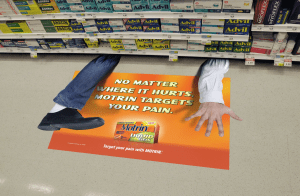When evaluating media strategies, CPM rates by industry remain one of the most important metrics for marketers. CPM—or cost per thousand impressions—offers a consistent way to compare reach across channels. But not all impressions are created equal. Especially when you’re comparing traditional media (like TV, radio, and print) with out-of-home (OOH) formats such as in-hand advertising, transit media, or place-based ads.
Many marketers are shocked to discover that while traditional platforms offer high volume, they also suffer from high waste and diminishing engagement. On the other hand, OOH CPM ads, when deployed creatively and locally, offer surprisingly strong returns on budget.
In this blog, we’ll explore how CPM rates by industry differ across traditional and OOH media, what that means for real-world campaigns, and why marketers should reconsider where their dollars are best spent.
CPM Rates by Industry: A Quick Refresher
Before diving into comparisons, let’s review what CPM measures.
CPM (Cost Per Mille) is how much it costs to serve 1,000 impressions of an ad. It’s commonly used across digital, print, TV, and OOH advertising to compare campaign costs across formats.
Why it matters:
It allows for apples-to-apples budgeting.
It standardizes value across multiple platforms.
It gives you a foundation to evaluate ROI.
But there’s a catch: not all impressions are equal in quality. That’s why comparing CPM ads across channels must include engagement and context.
Average CPM Rates by Industry (Traditional Media)
Based on industry benchmarks, here are some standard CPM rates by industry for traditional formats:
Industry | Print (CPM) | TV (CPM) | Radio (CPM) |
Retail | $20–$40 | $25–$45 | $12–$20 |
Healthcare | $30–$60 | $35–$55 | $18–$25 |
Finance | $40–$70 | $40–$65 | $20–$30 |
Education | $25–$50 | $30–$55 | $15–$25 |
These numbers reflect premium national buys. Local/regional rates may be lower but often come with smaller reach.
OOH Advertising: A Different Kind of CPM Ad
Out-of-home advertising has evolved far beyond highway billboards. Today’s OOH includes:
Transit shelters and buses
Grocery cart ads
Bar coasters and pharmacy bag ads
Elevator screens and venue-based signage
In-hand advertising (e.g., door hangers, hotel keycards)
What’s unique about OOH CPM advertising?
It can’t be skipped or blocked
It exists in high-dwell-time environments (waiting rooms, public transit)
It leverages physical presence for stronger recall
And most importantly, it delivers competitive CPM rates by industry—especially when compared to traditional media’s high production and placement costs.
Average CPM Rates by Industry (OOH Media)
Here’s how OOH stacks up:
Industry | Classic OOH (CPM) | In-Hand OOH (CPM) |
Retail | $3–$10 | $2–$5 |
Healthcare | $5–$12 | $3–$7 |
Finance | $6–$14 | $3–$6 |
Education | $4–$10 | $2–$5 |
While the CPM is lower, the engagement rate per impression is often higher due to direct placement (e.g., into a consumer’s hand or field of view while commuting).
Why Traditional CPM Ads Don’t Always Perform
The problem with many CPM ads in traditional media is low engagement and attribution. Here’s why:
TV ads are often skipped or ignored.
Radio ads lack visuals and can be missed in background noise.
Print ads fight for attention in cluttered layouts.
Despite high CPM rates by industry, these formats offer poor measurability and diminishing influence—especially among Gen Z and Millennials.
In-Hand Advertising: The CPM Underdog
In-hand advertising—where your ad is delivered directly to the consumer’s hands via a coffee sleeve, pharmacy bag, pizza box, or door hanger—is emerging as a CPM advertising winner.
Key advantages:
Physical interaction: Leads to longer dwell time.
Localized targeting: Ads reach relevant, nearby audiences.
High visibility: No scroll, no skip, no ad blockers.
For example:
A pharmacy bag ad reaching 10,000 local customers may cost just $400 (a $4 CPM) and deliver direct brand exposure during health-focused moments.
A hotel keycard ad targeting business travelers may cost $3–$5 CPM but achieve a 5-day average exposure per user.
Industry Use Case: Healthcare
Let’s say a regional urgent care center is weighing options.
A 30-second local TV ad medical practice costs $5,000 with an estimated reach of 100,000 = $50 CPM
A pharmacy bag CPM ad campaign costs $2,000, reaching 50,000 = $4 CPM
The in-hand campaign:
Targets people already thinking about health
Reaches them during prescription pickup (high intent moment)
Stays with them all the way home
This isn’t just a cheaper CPM—it’s a smarter one.
When to Choose Traditional vs. OOH CPM Advertising
Scenario | Choose Traditional | Choose OOH/In-Hand |
Nationwide brand launch | ✅ | ✅ (as a supplement) |
Local service promotion | ❌ | ✅ |
Budget under $10K | ❌ | ✅ |
Highly regulated industries | ❌ | ✅ (pharmacy/health-safe) |
Need for real-time engagement | ❌ | ✅ (QR-enabled print) |






